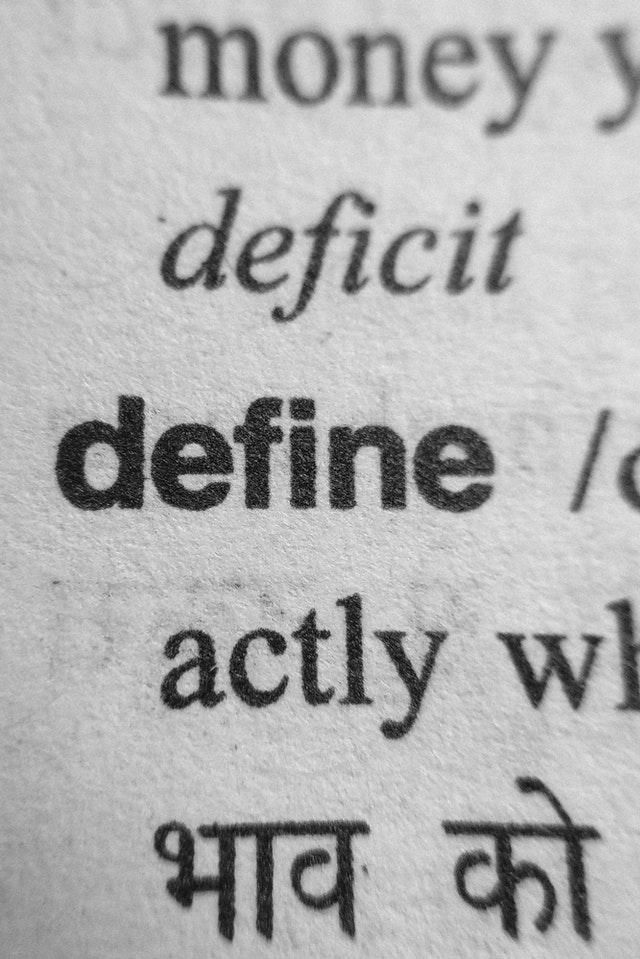Brand consistency is the manner by which an organization conveys messages lined up with its guiding principle, brand promise, client experience, and brand identity components. It alludes to how to align your organization’s marketing content with respect to the brand image and rules. Brand consistency guarantees that your image is effectively recognizable across all showcasing channels. This makes a strong, predictable identity for the brand, and great opportunities for existing and potential customers.
Why is It Important ?

Brand consistency is the conveyance of brand messaging in accordance with the brand personality, qualities, and methodology over time. Consistency implies your intended interest target audience is being presented to core messages, visual branding, and other brand components over and over, which can assist with setting brand acknowledgment. Here’s a more critical gander at brand consistency and why it’s significant for brands.
Great marketing is very important for organizations to accomplish a significant objective while investigating their image on the lookout: brand consistency. Position should be aligned with qualities and personality. It permits the brand’s audience to perceive its qualities with each campaign. However, legitimate as it seems to be to keep up with this consistency, it’s evident how difficult it can be. It requires nonstop endeavors. Considering this, and with certain practices and understandings, it’s feasible to fabricate and keep a predictable long-term picture on the lookout. The advantages of this consistency in brand positioning can give critical differentials within competitive markets.
To encourage long-term clients, organizations need to assemble trust through brand consistency. The more steady your image is, the more noticeable it is to buyers, giving a sensation of unwavering quality. This assists your brand to connect with your customers on a personal level.
Buying is more of an emotional choice than a practical one. Since people are driven by sentiments, great advertisers will in general use emotion based campaigns, customarily selling a feeling instead of a genuine item. By giving buyers a trustworthy encounter regardless of the channel of correspondence, you impart a sensation of brand acknowledgment, solace, and trust, making them bound to buy from you over and over.
In any case, brand consistency can be very hard for companies to keep up with. One difficulty that numerous organizations face is that the personality of the people who make the showcasing material can regularly dominate that of the organization’s image. This could create an issue, specially for larger organizations.
Another difficulty can be discovering approaches to discuss your brand all day every day while still keeping it significant and fascinating. Along these lines, keeping a predictable brand plan while keeping plans new for new missions or occasions can be a challenge.
At last, guaranteeing that your workers are brand ambassadors can be a troublesome endeavor. To be brand reliable, employees should address the brand’s guiding principle, regardless of what their job in the organization is.
How to Maintain Brand Consistency ?

Below are some steps to ensure brand consistency in an organization.
1. Understand the meaning of the brand
You should initially comprehend the motivation behind your brand and the worth it has been providing since its creation. That ought to be the beginning stage. This way, the brand will regard the establishments on which it built its audience and settled itself in the market. Exclusively by understanding the brand’s significance, it’s feasible to assemble a steady marking.
2. Define Guidelines

Rules are necessary to guarantee that the brand follows a way in its correspondence techniques. They are rules that ought to be followed since consistency is identified with normalization. Hence, with strong rules, the propensity is that branding will consistently be lined up with the components that make up the brand.
3. Use consistent messages
Reliable messages are those that consistently pass on the principle thought regarding the brand. A similar methodology, a particular language, the conventional tone, and assets, for example, trademarks are fundamental to offer consistency to messages. The manner in which brands speak with their audience day by day is one of the urgent focuses in keeping up with consistency.
4. Meeting Public Expectations
The public has assumptions about how an organization completes it’s marking. This is identified with how that business has fabricated its image throughout the long term.
5. Create a positive image
Brand consistency also relies upon a positive way to deal with subjects, a coherent positioning, and an ideal picture. The general population anticipates that companies should work effectively, reliably, and avoid dubious issues or occasions that have adverse consequences.
Staying away from that is also part of the job. Branding guidelines direct how everybody in an association ought to convey the brand to the world. This incorporates components both visual (for example logo, typeface, shading range, text styles, photography) and narrative (tone, POV).
These components should consistently be reflected in guarantees that are intended to grandstand and represent an organization, like a brand’s story, their buyer’s personas, and more. One approach to assist with empowering the marketing team is to work with the utilization of brand guidelines by making a digital asset and brand portal that employees across the association can get access to.
Keeping a current duplicate of the brand style guide inside this portal will guarantee that everybody in the organization has consistently assessed the current marking rules, even as market changes happen.
6. Use a centralized platform
It should be easier for everyone on the team to access approved brand materials. Cloud technology should be used for this purpose rather than keeping tabs with various emails or host assets. Access to these materials can be limited for employees and vendors with secure login. It can also be customized with respect to the look and feel of the tool to go along with your brand image.
This will help reduce the number of doubts among the team about your brand and will give you 100% control over the brand.
7. Make clear expectations

Composed and visual brand guidelines are very important as they tell employees (or outer merchants) how to settle on choices while remaining on-brand. Hence their expectations need to be built up first with respect to the images, logos, tone, color and more.
8. Customize
The thought behind Marketing Asset Management isn’t to restrict your employees with content under full lock and key. This just keeps them from acting naturally adequate, and they stay dependent upon the advertising group for one-off material solicitations when circumstances emerge that require personalization – like material for a particular geographic area, or requiring special signage for a specific industry occasion.
Instead, enable your association’s brand stewards to customize marked resources utilizing template based customization. Lock certain regions (like that under brand control), yet take into account adaptable updates on fields like date or area.
This way, employees around the world will be able to stay on-brand while making localized pieces, making them more customer-centric while giving significant time back to your marketing team.
8. Internal Marketing to Promote Your Platform
Once the online marketing portal is set up, it’s important to promote it continuously using the principles of integrated marketing. Utilize various channels, for example, roadshow events, company intranet, and in-person discussions to support user adoption. Remind the employees who make material requests that they can likely find whatever they need on the self-service marketing platform.
10. Measure Adoption

It is difficult to maintain brand consistency in larger organizations, especially when there’s improper use of brand material. Brand managers are responsible to ensure that the efforts taken to maintain the same are working.
They need a better understanding of the needs of the internal team, and work according to those needs. This can be done by analyzing the materials being downloaded, customized and requested.
Also track the number of users who have pursued your marketing asset portal, the number of resources you’ve added and refreshed, and the number of requests have been set to external (endorsed) sellers.
11. Unite Visual Elements

Your visual components use important branding techniques to ensure consistency. Ensure that your visual appearance in all marketing materials is clear and conforms to the markup style guidelines.
In addition, you need to ensure that all employees have access to key visual components. In this case, advanced digital asset management (DAM) mechanisms can help.
12. Support the Brand’s internal efforts
Brand consistency is a concern for the entire company. Urging employees to gain proficiency with the brand values, brand message, and the story behind them, assists organizations to provide a more professional picture to customers and clients.
For instance, B2B programming organization Splunk directed an activity a couple of years prior to characterize, understand, and share the brand inside to recently added team members to keep up with the way of life as they developed from a startup to a worldwide association.
This allows the company to move towards a more conspicuous charter while preserving its unique history, mission statement and culture. To assist with working with these inward endeavors, an organization could assign a brand manager who will go about as the guardian for the organization’s products and services.
Brand managers can guarantee that workers keep up with attention to consistent branding, utilize the right brand voice across all marketing endeavors, and comprehend the rules and regulations with regard to brand guidelines.
13. Expedite Brand Evolution
Evolution in branding will happen, as companies explore inside changes to reflect shifts in the market. The organization and its products must change and adapt to new market demands. At the point when this occurs, try to audit these changes according to a banding viewpoint as well. Remember that the center brand esteems don’t really need to change.
All things considered, changes can happen in inventive components, for example, logo plan, textual styles, and shading range. Take hair care organizations as an example.
With an end goal to react to the market’s craving for less plastic waste, they may change the bundling or style of their bottles to decrease the measure of plastic utilized or change to reused plastic.
Another way to look at this problem is to consider different color schemes to make your brand unique. The utilization of explicit tones can inspire passionate reactions from various different crowds.
For example, a logo showing reliability may mean that it contains shades such as blue and white. Other different shading plans can bring out different feelings, like authority, force, and energy. This type of brand promotion provides an opportunity to develop and maintain brand consistency.
14. Prepare for Changes

Change is inevitable, so planning for the future will lay the foundation for the organization and make meetings less frustrating. A straightforward method to guarantee branding stays reliable all through different changes is to utilize digital asset management softwares (DAMs).
Enrolling the assistance of a DAM assists associations to keep their marketing assets and give controlled admittance to employees day in and day out. Since brand resources are put away in one centralized area, any likely changes to advertising materials can without much of a stretch be worked with through the DAM, so nobody is scrambling when the opportunity arrives to refresh brand insurance.
So,
Whatever lies at the core of a brand, if it’s a predictable brand guarantee, it’s anything but a decent shot at progress. There are a lot of marking articles, blog entries, recordings and specialists that propose essential approaches to keep up with brand consistency. While get the essentials down, this kind of exhortation will not haul your image out of mediocrity.
All things considered, broaden your imagination and thoughts past the ordinary. Consider approaches to pound down your consistency that others haven’t found at this point. Odds are, you’ll wind up on the right half of progress. Best of luck!
Some other Posts you might be interested in.
How a Mid-Sized Insurance Company Centralized Documentation and Achieved BFSI Compliance with QuickReviewer
A mid-sized insurance firm achieved full BFSI compliance and centralized its fragmented documentation using QuickReviewer. With version control, text comparison, and collaborative review, the company eliminated delays, reduced losses, and improved customer satisfaction by delivering faster claims—all while ensuring long-term risk reduction and stability.
Empowering a Mid-Sized Travel Agency With Quality Travel Collateral Using QuickReviewer
A mid-sized travel agency operating globally transformed its content review process using QuickReviewer, enabling faster approvals of seasonal itineraries and offers. Learn how version control, real-time collaboration, and centralized feedback empowered teams to launch campaigns with consistency, speed, and confidence.
Reducing Rider Gear and Accessory Design Time for Mid-Size Adventure Motorcycles with QuickReviewer
See how QuickReviewer revolutionized the design and development process for riding gear and motorcycle accessories, enabling rapid 3D reviews, targeted feedback, and faster launches.
How a Popular Automotive Magazine Used QuickReviewer to Publish a Special Issue in Just One Week
How QuickReviewer Helped a Leading Magazine Publish an Automotive Special in 7 Days
How an Engineering Firm Updated Legacy Technical Documentation with QuickReviewer
How an Engineering Firm Easily Updated and Transformed Legacy Technical Documentation with QuickReviewer, Boosting Compliance and Customer Satisfaction
3D Model Review for Interior Design and Architecture students with QuickReviewer
Explore how QuickReviewer streamlines 3D model review and approval in education for interior design and architecture students, enabling faster iterations and enhanced collaboration.







